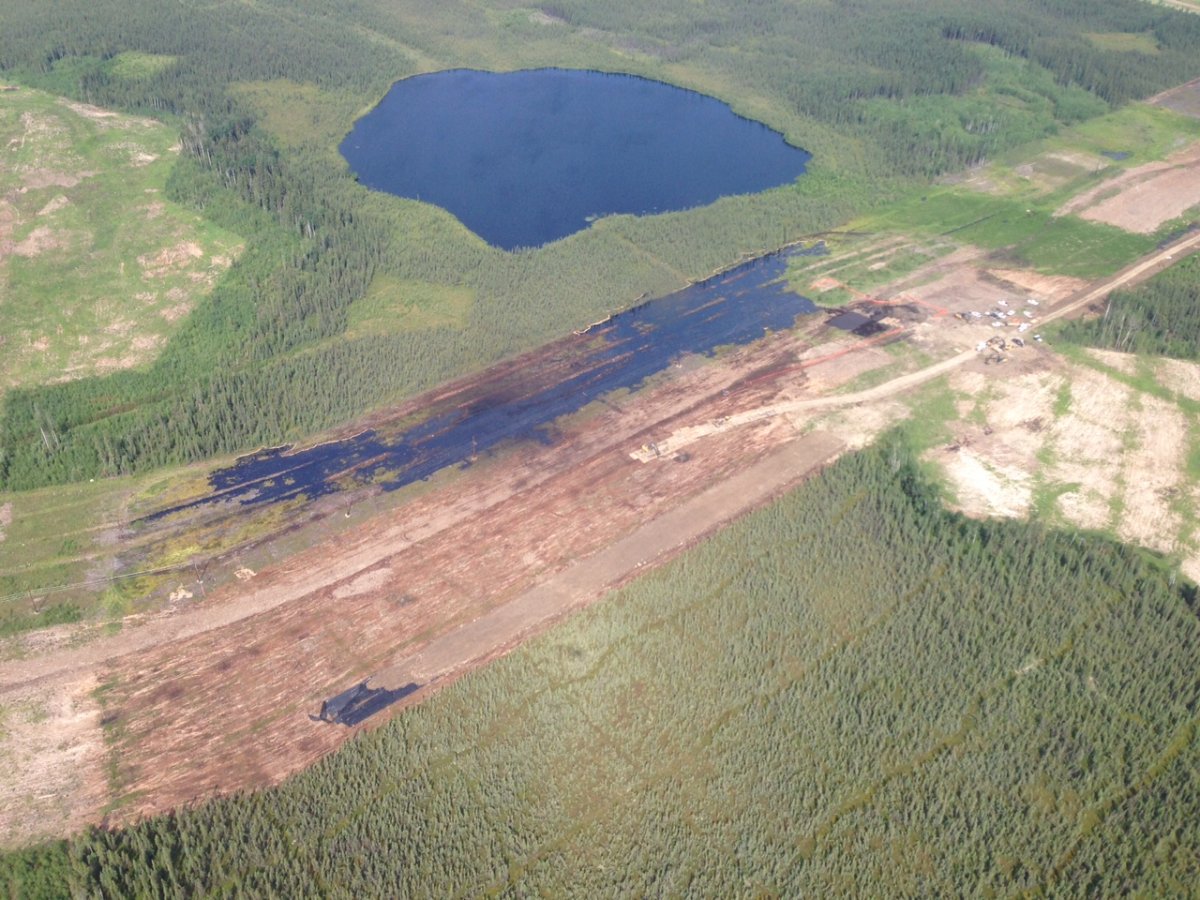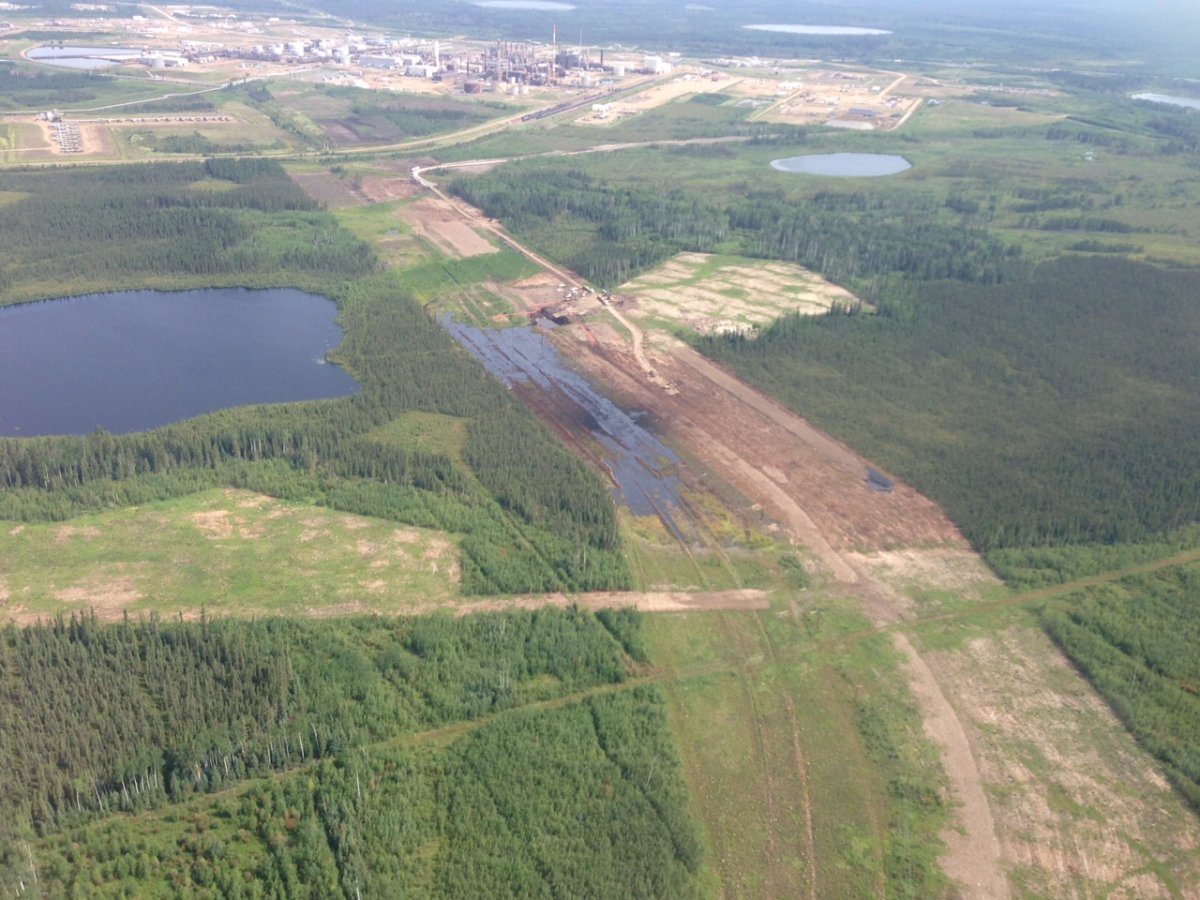CALGARY – Oil and gas company Nexen’s automatic detection system didn’t detect a ruptured pipeline that resulted in a massive bitumen emulsion spill this week, senior vice-president Ron Bailey told reporters in Calgary Friday morning.

“There’s failsafe systems that were designed to actually detect” pipeline failures such as the rupture through the double-walled pipeline that resulted in the spill, Bailey said.
“This is a modern pipeline. We have pipeline integrity equipment, in fact some very good equipment,” he said.
“Our investigation is looking at exactly why that wasn’t alerting us earlier.”
Nexen still doesn’t know what caused the pipeline rupture — or even when the rupture occurred, Bailey said.
The investigation will also try to determine “why we’ve ended up with a breach of both layers of the pipe.”
The leak, which the company discovered on Wednesday afternoon, spilled an estimated 5,000 cubic metres of emulsion – about 5 million litres of bitumen, sand and wastewater – over a 16,000-square-metre area about 36 kilometres southeast of Fort McMurray.
Alberta’s Energy Regulator is investigating the spill and issued environmental protection orders late Friday afternoon.
The order asks Nexen to “contain the spill, identify affected parties and notify them, and conduct testing in the area for hydrocarbons and chlorides; develop a water body management plan, wildlife mitigation plan and detailed delineation and remediation plan; develop daily public reports and publish them to the Nexen website; and submit a final report to the AER within 30 days of the completion of all work required in compliance with the Order.”
READ MORE: What is bitumen emulsion?
“We shut down our operations immediately when we found the leak,” Bailey said.
“We did have a contractor actually walking the pipeline and that’s how we discovered it” on Wednesday.
The area is so remote Nexen had to build a road to reach the spill site at its Long Lake operations in northern Alberta — the remote area usually has a winter-only access road, Bailey said. Crews are only beginning to “vacuum” up the enormous pooled spill.
“We’ve actually had to construct an all-weather road into the site. And that’s taken some time,” he said.
“We’ll be starting to vacuum here this morning to start taking up the spill.”
The company is still in the process of building a road to the site of the ruptured pipeline itself.
READ MORE: Crude Awakening: 37 years of oil spills in Alberta
GALLERY: Aerial photos of the Nexen spill site
The double-walled pipeline, about 20 inches in diameter, is relatively new: It was put in place just last year.
“This is a Nexen pipe. We own it; we’re going to take accountability for it,” Bailey said.
Bailey said Nexen is “disappointed” that this took place.
“We sincerely apologize for the impact this has caused,” Bailey said.
“We’re deeply concerned that this incident has happened and we need the investigation to go through its full course. We’ll be looking at our operating procedures, our design procedures — just everything — to get a root cause.”
Bailey said there are no residents nearby and there’s been no immediate human impact.
“We’re also taking mitigation steps as it relates to environment and wildlife and we are setting up protective equipment to keep them out of the zone.”
READ MORE: When ‘failsafe’ leak detection systems fail
Pembina Institute analyst Erin Flanagan said she and other environmental advocates will be watching to see what penalties, if any, Alberta’s Energy Regulator imposes as a result of the spill.
“How many headlines have we seen where a multibillion-dollar company gets a $10,000 fine?” she said.
“The AER has a very significant spill on their hands. This is an opportunity for you to really create a new precedent for industry.”
While Nexen has had spills at its Long Lake site before — including two small spills, one of wastewater and one of condensate, last October — none comes close to rivalling this week’s spill in magnitude.
Greenpeace climate activist Melina Laboucan-Massimo says the Nexen spill shows Canada isn’t ready to approve more oilsands expansion.
“We shouldn’t be streamlining new tar sands processes when we have five million litres spilled into the land.”
The Athabasca Chipewyan First Nation said in a statement Friday it’s “is concerned that without addressing the current poor environmental standards coupled with increasing development in the region will only result in more spills and incidents.”
“A spill this size into the Muskeg, which is an important part of the ecosystem in the region and house many of our medicines, berries and habitat for species our people rely on for sustenance, is extremely serious,” Chief Allan Adam was quoted as saying in the statement.
“The repercussions from the incident could potentially be felt far and wide.”
With files from Leslie Young Kam Razavi










Comments